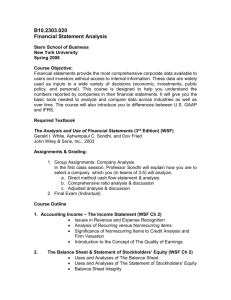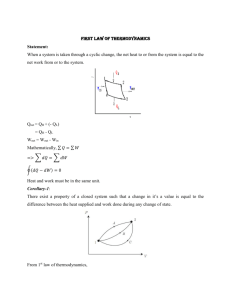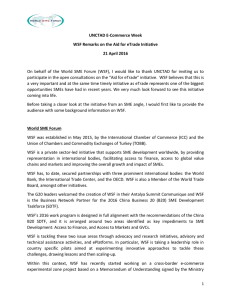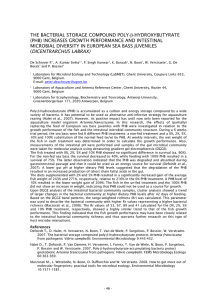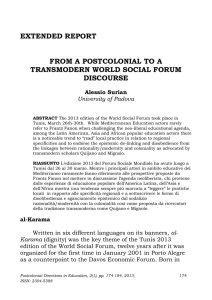Syllabus
advertisement
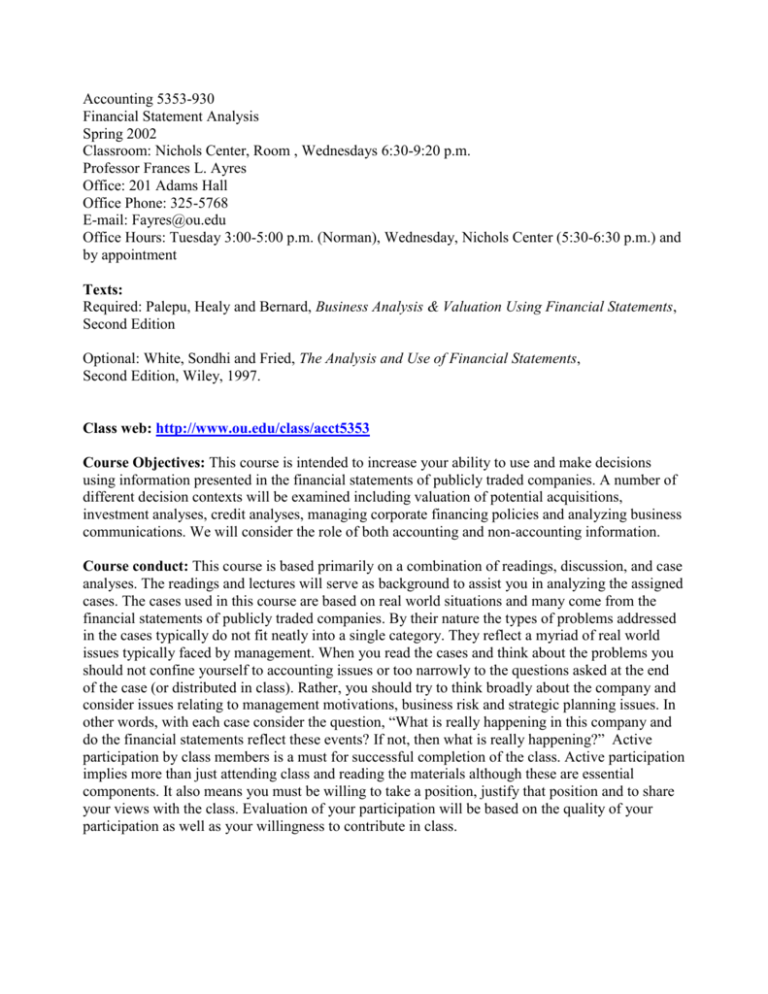
Accounting 5353-930 Financial Statement Analysis Spring 2002 Classroom: Nichols Center, Room , Wednesdays 6:30-9:20 p.m. Professor Frances L. Ayres Office: 201 Adams Hall Office Phone: 325-5768 E-mail: Fayres@ou.edu Office Hours: Tuesday 3:00-5:00 p.m. (Norman), Wednesday, Nichols Center (5:30-6:30 p.m.) and by appointment Texts: Required: Palepu, Healy and Bernard, Business Analysis & Valuation Using Financial Statements, Second Edition Optional: White, Sondhi and Fried, The Analysis and Use of Financial Statements, Second Edition, Wiley, 1997. Class web: http://www.ou.edu/class/acct5353 Course Objectives: This course is intended to increase your ability to use and make decisions using information presented in the financial statements of publicly traded companies. A number of different decision contexts will be examined including valuation of potential acquisitions, investment analyses, credit analyses, managing corporate financing policies and analyzing business communications. We will consider the role of both accounting and non-accounting information. Course conduct: This course is based primarily on a combination of readings, discussion, and case analyses. The readings and lectures will serve as background to assist you in analyzing the assigned cases. The cases used in this course are based on real world situations and many come from the financial statements of publicly traded companies. By their nature the types of problems addressed in the cases typically do not fit neatly into a single category. They reflect a myriad of real world issues typically faced by management. When you read the cases and think about the problems you should not confine yourself to accounting issues or too narrowly to the questions asked at the end of the case (or distributed in class). Rather, you should try to think broadly about the company and consider issues relating to management motivations, business risk and strategic planning issues. In other words, with each case consider the question, “What is really happening in this company and do the financial statements reflect these events? If not, then what is really happening?” Active participation by class members is a must for successful completion of the class. Active participation implies more than just attending class and reading the materials although these are essential components. It also means you must be willing to take a position, justify that position and to share your views with the class. Evaluation of your participation will be based on the quality of your participation as well as your willingness to contribute in class. University Reasonable accommodations: Any student in this course that has a disability that may prevent him or her for fully demonstrating his or her ability should contact me personally as soon as possible so that we can discuss accommodations necessary to ensure full participation and facilitate your learning opportunity. Cases: Each team will be responsible for two primary cases through the course of the semester. For the cases on which you are assigned you are expected to serve as discussion leader/facilitator for the class discussion of that case. I expect that we will spend 45-60 minutes on each case. Some cases may take more time than others. I do not expect you to present the class with a solution but rather to be able to raise issues and to lead the class discussion of the case. For cases for which you are a primary presenter your team must turn on a typed analysis of the cases. The typed analysis should address the questions raised in the case as well as any additional issues that your team decides are important and how you addressed these issues. The typed case analyses are due the week following the case discussion. For cases for which you are not a primary presenter you should also prepare a short analysis of the case that includes numerical analysis where appropriate and a summary of key points. This mini-analysis will normally be 1-2 typed pages and are to be done individually. Mini-analyses are to be prepared by class time for the class in which the case is to be discussed. All students must be prepared to discuss each case regardless of whether it is a primary case, and all students will be responsible for understanding the concepts utilized in the cases. Team project: Each team will also be responsible for one major team case project. Each team is to select a company of their choice and will conduct a complete analysis and valuation of that company. You are also to present your analysis to the class and to turn in a page summary of your analysis no more than 15 pages in length. The company must be a publicly traded company that is not a bank or insurance company. It also must be a company that you are not analyzing in another class. You should begin to think about your company choice as soon as possible and start to gather information on the company. Your analysis should include the following: a) complete comparative ratio analysis and common size financial statements and discussion of key issues suggested from ratio analysis; b) critical analysis of footnotes and restated ratios/common size statements based on restated financials. Include discussion of any differences obtained from those in part a; c) computation of z score and discussion of risk default; d) computation of the estimated value of the company including a detailed discussion of the assumptions on which your valuation is based. Relative to current market prices determine if the company you select is under- or over-valued and by how much. 2 Grades: Mini-analyses Class participation Primary cases Midterm exam Team project Final exam Total 20% 10% 20% (10% each) 5-25%* 25% (includes peer evaluation) 0-20%* 100% * You do not need to take the final if you are satisfied with your pre-final grade. If you are not satisfied with your pre-final grade you can take the final exam. The final will allow you to improve your exam grade. Your grade will be based on all but the final using the percentages shown, unless you elect to take the final. If you take the final your midterm exam will be weighted at 5% and the final at 20%. Class participation: I will evaluate your class participation based on my assessment of your overall contributions to class discussions as evidenced by preparation and willingness to volunteer and contribute to the class. I will include attendance, but attendance alone is not a basis for an A or B in class participation. Outstanding class participation means that you are prepared to discuss the homework and cases, attend class and contribute positively to the class discussion. Peer evaluation: There will be a peer evaluation at the end of the semester. You will be asked to evaluate your team members’ performance throughout the semester in terms of working together on the assigned homework and preparing for your sessions as discussion leaders. Assignment schedule: NOTE: PHB refers to Palepu, Healey and Bernard, and WSF is White, Sondhi and Fried January 16 Course Introduction See first day assignment handout (Use of Dupont Analysis and Rim Model) January 23 Chapters 1-2 PHB- Framework and Strategy analysis Background Ch. 1 & 7, WSF Case: America Online, Inc. 3 January 30 Chapter 3, PHB-Accounting Analysis Background: Ch.8, WSF Ch. 3, WSF, pp. 66-69 WSF, pp. 237-244 WSF Case: Harnischfeger Corporation –Team 1 February 6 Chapter 4, PHB, Asset Analysis Background. Ch. 7, Ch. 9 WSF Case: Boston Chicken, Inc.- Team 2 February 13 Chapter 5, PHB, Liability and Equity Analysis Background, Ch 11, WS Case: Manufactured Homes, Inc.-Team 3 February 20 Chapter 6, PHB, Revenue Analysis Background: Ch. 2, WSF Case: Oracle Systems, Inc.-Team 4 February 27 Chapter 7, PHB, Expense Analysis Background: Ch. 7,8 WSF Case: Pre-Paid Legal Services Inc. –Team 5 March 6 Valuation issues modeling and example Chapter 11, PHB Valuation Theory and Concepts Chapter 12, PHB Valuation Implementation Background: Chapter 19 WSF Case; TBA March 13 Exam 1 March 20 Spring Break 4 March 27 Chapter 8, 15 PHB Entity Accounting Analysis and Acquisitions Background: Ch. 13,14 WSF Case: Thermo Electron Corporation –Team 1 April 3 Chapter 9, PHB Financial Analysis Background: Ch. 3, 4 WSF Case: Home Depot – Team 2 April 10 Cases: Revco D.S., Inc. –Team 3 Schneider and Square D. –Team 4 April 17 Ch. 13 PHB Background: Ch. 5, WSF Case: Arch Communications Group, Inc.-Team 5 April 24 Team Presentations of projects May 1 Final Exam (optional) 5
![[#WSFPHP-440] error in logical flow of wsf_class_writer.php](http://s3.studylib.net/store/data/008600200_1-8be823d2ab9ee72bbafe3e9a75f3c5f6-300x300.png)
